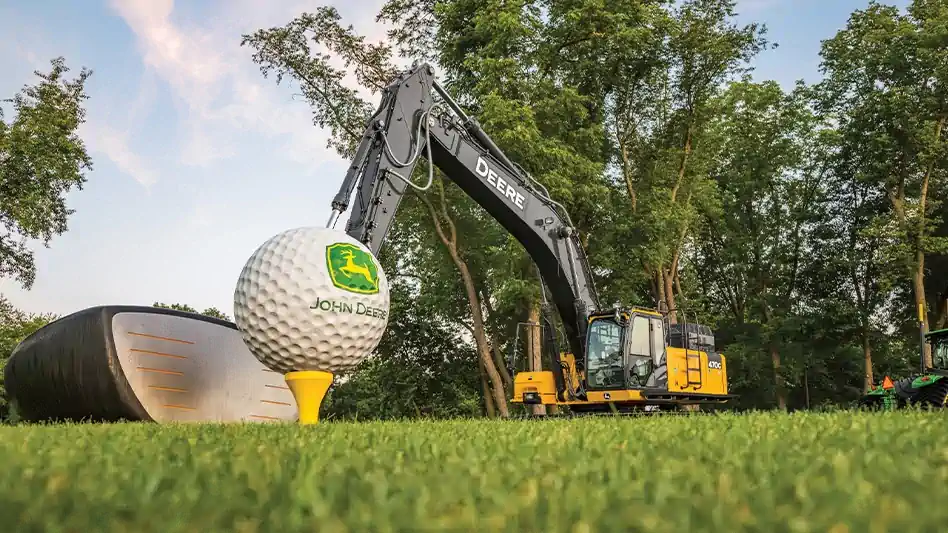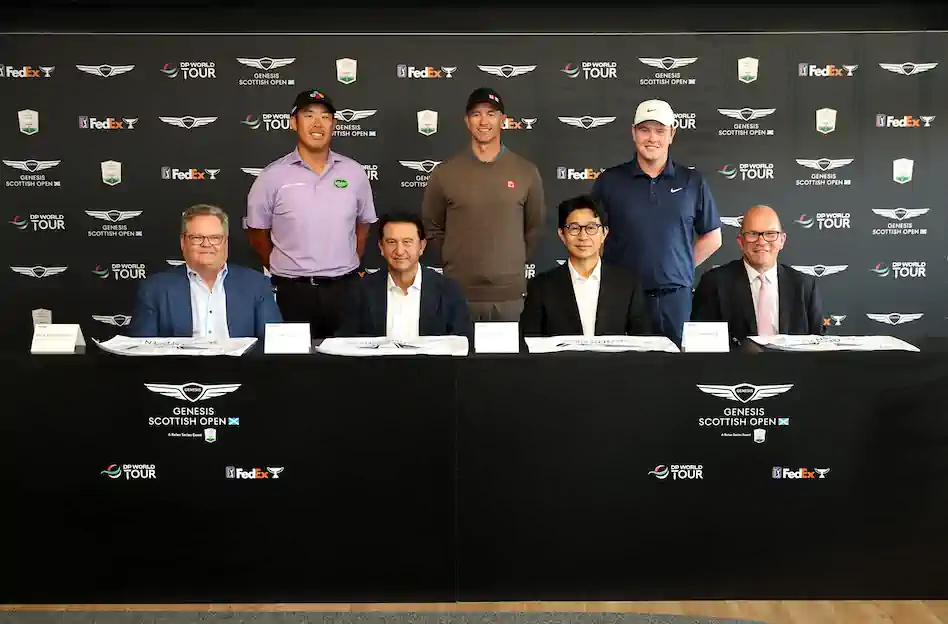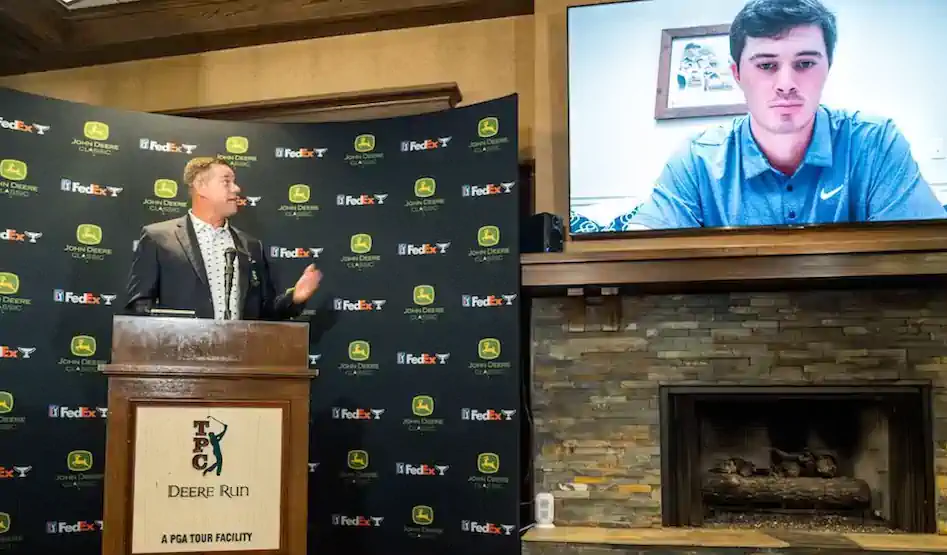IGOLF AND SYNCWISE FOUNDER PROVIDES MEANINGFUL CLARITY REGARDING USE OF AI
By: Chris Bello
Chief Information Officers and their IT teams are looking to align business needs with artificial intelligence ambitions to stay ahead with timely solutions in this fast-changing environment. As a result, even the most technology-averse individuals are now finding themselves using this new technology in some way.

Brian Verdugo, founder and CEO of iGolf and Syncwise
Aboo Tayub, founder of UK-based Golf Business Technology, recently welcomed Brian Verdugo, founder and CEO of iGolf and Syncwise, to weigh in on this important topic—as business leaders globally begin wrapping their arms around this transformative technology.
Knowing there are so many misconceptions surrounding artificial intelligence, Tayub and Verdugo sat down for a robust conversation covering everything from society’s skepticism about humans being replaced by machines, as well as the major differences between what is true AI and the current chatbot-related technology that has recently become all the rage.
Tayub referenced Verdugo’s recent op-ed for Golf Business Technology—a thoughtful piece titled “Understanding Artificial Intelligence and Clearing Up Some Misconceptions”—where Verdugo explained that roughly 99% of the artificial intelligence encountered by the average person is the aforementioned chatbot technology, due to the rise of apps like ChatGPT over the past year.
“This type of AI relies on pre-processed, template-dependent systems and algorithms created to process human interaction and direction before delivering a response; whereas true artificial intelligence is rooted in cognitive learning and this much more intense process of capturing data from countless sources, processing it, learning from these different scenarios—and the technology concluding on its own what is right and what is wrong based on the information,” said Verdugo.
The tech pioneer went on to explain that this type of muscle memory was like “young children learning through both observation, experience and the result of one’s actions—crawling leading to walking by way of falling, getting back up, trying again—ultimately learning the task and going on to the next.”
Of course, this begs the question for those skeptical about this type of technology—one often portrayed by way of ‘machines taking over’ fashion in pop culture: what happens if and when AI become self-aware?
Even scarier, what if this technology begins to understand and mimic human behavior—not even on a macro level when talking about a global takeover, but on a micro level regarding machines having the ability to do jobs that once belonged to humans?
Verdugo wisely kept the conversation from taking a dystopian turn, immediately quelling any long- and short-term fears with a reminder that all things are relative.
Instead of trying to predict any worst-case scenarios about an AI takeover, the CEO delivered an articulate, common-sense answer to the big doom-and-gloom question asked by so many.
Verdugo humanized the question by pointing out that years from now evolution will have shown how we robotically progressed over time, using the example of bionic knees or other medical advancements in recent times to underscore that we’re already taking steps in that futuristic direction.
He also suggested an opposing vantage point for doomsday types; one that focuses less on a full-blown AI takeover and much more on seeing the realities of this technology simply becoming a part of our everyday lives sooner than later, as we allow ourselves to work more closely with artificial intelligence to both better the technology as well as ourselves.
Verdugo went on to explain that what is lost in the Hollywood version of artificial intelligence is the fact that this type of technology can’t function its own and remains reliant on humans to provide support. These current AI data centers take up a lot of land, relying on an enormous amount of energy and requiring water as part of a cooling off process for the supercomputers. Each of these data centers averages roughly 17 gigawatts of power annually, which is expected to double by the year 2030—meaning more work for humans, not less.
“Even if AI no longer needs humans to continue learning through a behavioral model, it still requires a ‘food supply’ so eradicating mankind isn’t necessarily an intelligent or likely option,” said Verdugo. “Without humans supplying vast amounts of energy for power and water to maintain these large AI server farms, this technology would cease to exist.”
Thankfully, humans remain a vital part of AI as it continues evolving—so carving out our place in its advancement is crucial and the ability to pivot remains key. Yes, there will be some jobs replaced by this new technology, but we will also see the creations of alternative career paths that wouldn’t have existed without this type of technological growth.
“Will humans be replaced by machines? The short answer right now is ‘no’, but with a strong message that everyone embraces the world of AI and gets comfortable in their own personal effort to learn how to both use and embrace it,” Verdugo explained.
On a lighter note, Tayub shifted the focus to one of Verdugo’s other areas of expertise, as a thought leader in the golf technology space. Tayub inquired how this type of technology is impacting Verdugo’s companies iGolf and Syncwise, and where we’ll see immediate advancements in the sport.
While the “TopGolf revolution” is one of the more noticeable and obvious shifts—with the newfound popularity of the modern-day driving range using tracked golf balls and automatically scored drives—Verdugo focused less on the high-tech aspect of these facilities and more on the psychology regarding the comfort level the novice has by way of the gamification a venue like TopGolf provides.
“Once people get to the point that they’re interested in trying out the sport, how do they get hooked on it and really learn the game,” asked Verdugo.
If the ideal entry point was TopGolf—which helped bridge the gap between people not feeling comfortable enough picking up a club to trying it out in a non-invasive environment and falling in love with the sport—Verdugo sees the next phase being AI-simulated trailing tailored to individual styles and tastes.
“There is a massive appeal in the ability to enter a private room with a simulator and working with a friendly avatar customizable to one’s personal style of coaching,” he shared. “The end result: a positive affirmation instead of a tougher, more motivational approach. A fit for everyone? Of course not. However younger generations will likely be more comfortable with newer approaches to learning and AI will be one of them.”
Verdugo also sees AI playing a huge role in golf course management. Hs team has been providing some technology for the USGA, as the organization has put a focus on analyzing how people play the game while highlighting areas of the course that remain unused.
“The use of golf carts, autonomous lawn mowers, motion sensors and a connected irrigation system—all of this assists AI in its effort to monitor patterns and behavior 24 hours a day, seven days a week—while providing real-time changes and efficiency-improving recommendations for golf course owners and operators,” said Verdugo.
Learn more about what Verdugo and his teams are doing at iGolf and Syncwise.














